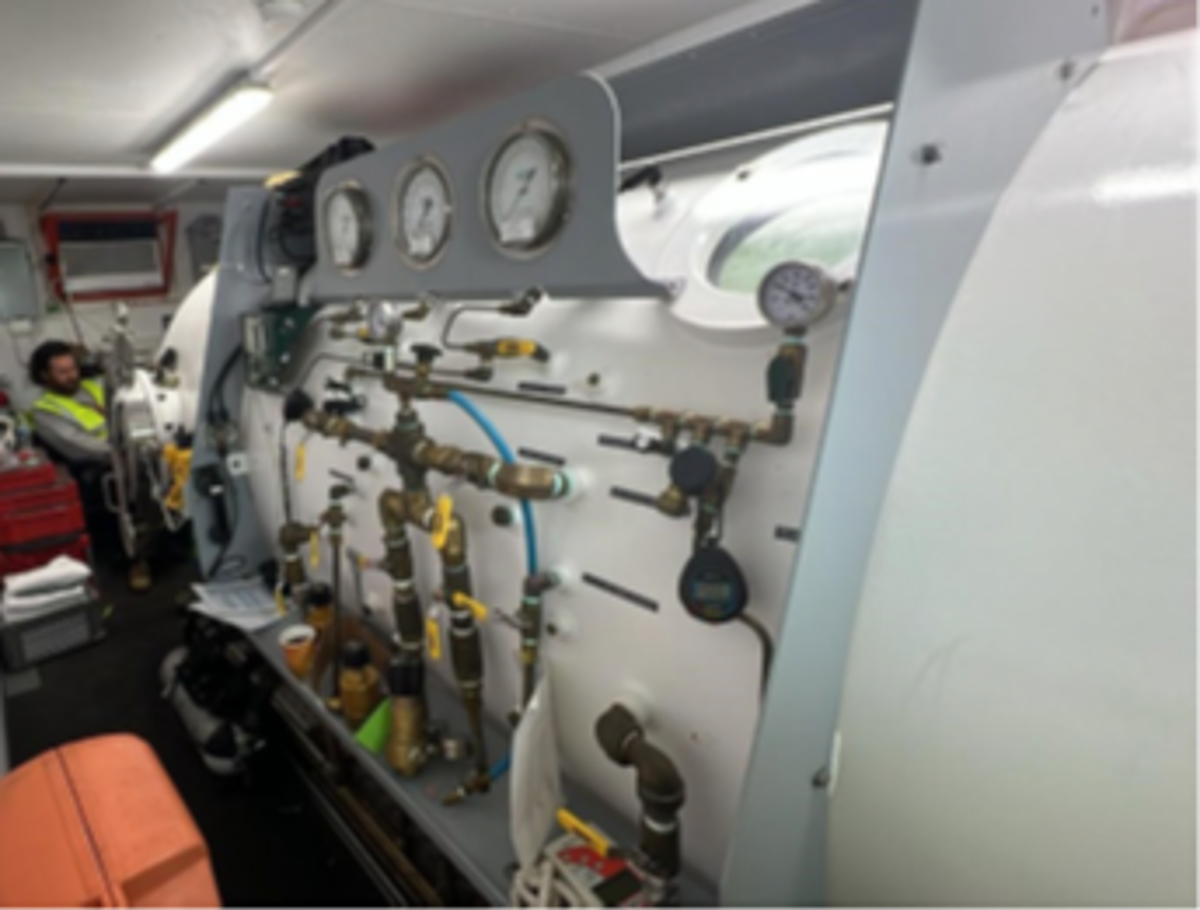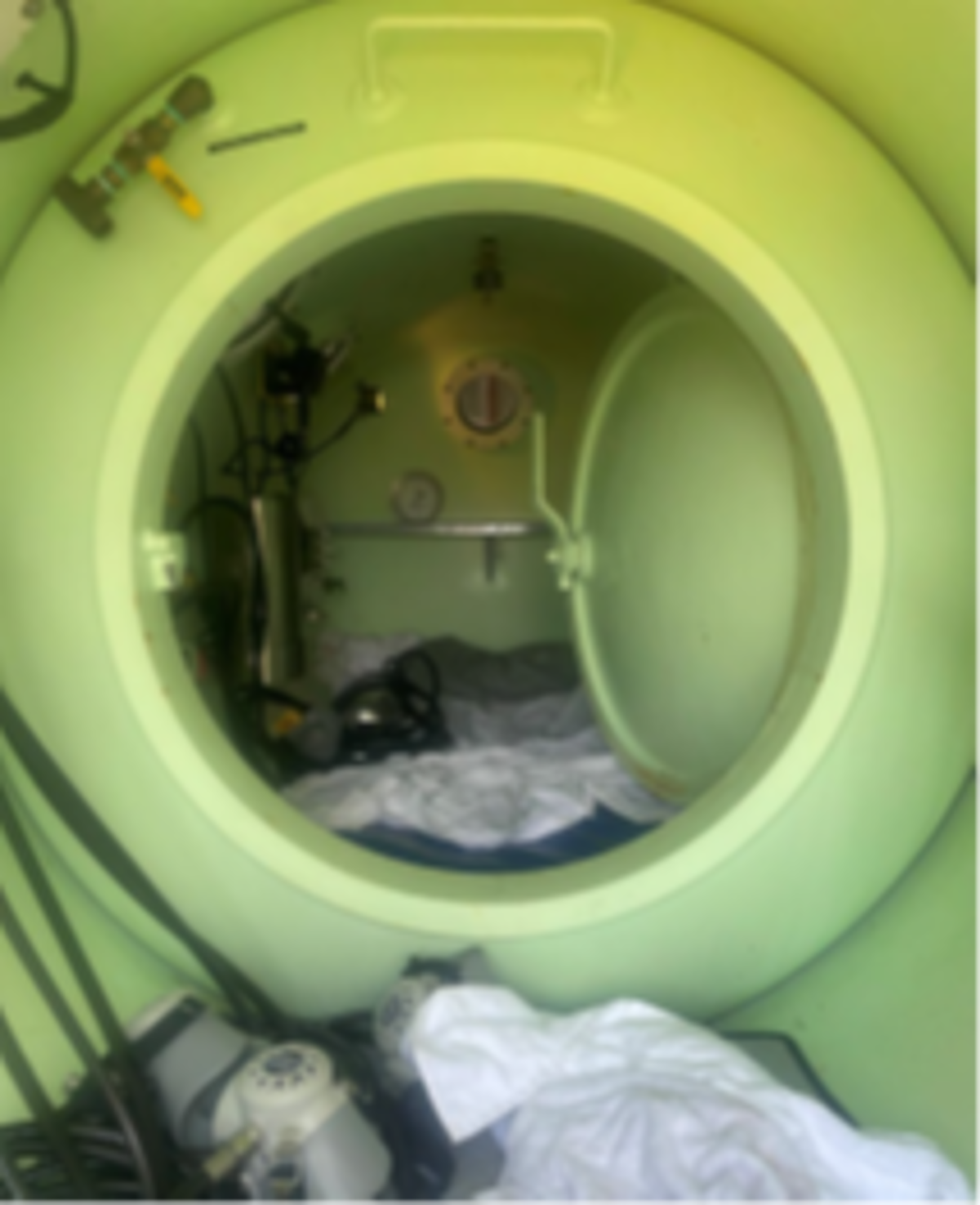Dive chamber procedures and operations
- Safety Flash
- Published on 31 July 2025
- Generated on 15 December 2025
- IMCA SF 13/25
- 3 minute read
Jump to:
Dive Chamber operator vented the outer lock, assuming a diver was not in there.
What happened?
Following a surface decompression dive to 32m on air, the diver entered the outer lock of the decompression chamber within the allotted surface interval. The chamber operator recompressed the diver in the outer lock of the chamber to 15m. Two minutes after reaching depth, the chamber operator started to vent the outer lock back to the surface. While venting the outer lock, the chamber operator realized that the diver was still in the outer lock and repressurised the diver back down to the depth. The locks were re-equalized at 15m, and the diver transferred to the inner lock and started their first 02 period. The chamber operator contacted the Supervisor. The Supervisor contacted the Superintendent, who began the emergency response procedures. The Diving Medical Officer (DMO) was consulted, and the diver was treated for omitted decompression. The diver completed the required chamber run and remained asymptomatic.
What went right?
- The diver transitioned from the last stop in the water to the chamber within the time allotted (less than 3 minutes).
- When the diver was observed in the outer lock during return to the surface, venting was stopped, recompressed back to 15m, and held until an emergency response plan was initiated.
- The Diving Medical Officer (DMO) was consulted and provided a treatment option.
- The diver remained asymptomatic after treatment was completed.
What went wrong?
- The diver was subjected to an intermediate upward excursion before being pressurised back down;
- The chamber operator did not confirm that the diver was in the inner lock before venting the outer lock;
- The Diving Supervisor did not confirm that the diver was in the inner lock of the chamber breathing Oxygen at 15m before exiting the chamber van.
What was the cause?
- Assumptions: the chamber operator assumed the diver was in the inner lock;
- The chamber operator thought they heard the inner door latch close.
- The operator looked in and could not tell the diver was not in the inner lock due to poor lighting and a "foggy" environment.
- The Diving Supervisor was eager to pass on dive information to the project superintendent.
- The work instructions do not clearly specify that the Diving Supervisor should make a second check.
- Transfer verification was not part of the written work instructions.
Lessons and actions
Our member made the following points:
- Divers should present an "OK" hand signal in the viewport during blowdown. A similar signal should be used once the diver has transferred to the inner lock, on oxygen, the inner hatch closed, and ready to take a seal.
- Divers should be familiar with the universal "All Stop" closed fist if problems with clearing ears or equalizing pressure.
- Chamber operators should absolutely verify that the diver is in the inner lock, breathing oxygen, the inner lock hatch closed, and ready to take a seal on the hatch.
- The Dive Supervisor should confirm the diver is in the inner lock at the appropriate depth, breathing Oxygen, before permitting the surfacing of the outer lock.
IMCA Safety Flashes summarise key safety matters and incidents, allowing lessons to be more easily learnt for the benefit of the entire offshore industry.
The effectiveness of the IMCA Safety Flash system depends on the industry sharing information and so avoiding repeat incidents. Incidents are classified according to IOGP's Life Saving Rules.
All information is anonymised or sanitised, as appropriate, and warnings for graphic content included where possible.
IMCA makes every effort to ensure both the accuracy and reliability of the information shared, but is not be liable for any guidance and/or recommendation and/or statement herein contained.
The information contained in this document does not fulfil or replace any individual's or Member's legal, regulatory or other duties or obligations in respect of their operations. Individuals and Members remain solely responsible for the safe, lawful and proper conduct of their operations.
Share your safety incidents with IMCA online. Sign-up to receive Safety Flashes straight to your email.

